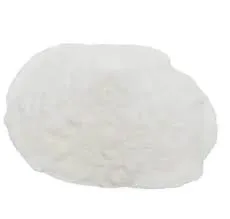
set. . 13, 2024 01:46 Back to list
grades of hpmc
Exploring the Grades of Hydroxypropyl Methylcellulose (HPMC)
Hydroxypropyl Methylcellulose (HPMC) is a versatile polymer derived from cellulose, known for its wide-ranging applications in pharmaceuticals, food, cosmetics, and construction industries. Understanding the different grades of HPMC, which are primarily defined by their methoxy and hydroxypropoxy content, is essential for selecting the appropriate type for specific applications.
What is HPMC?
HPMC is a non-ionic, water-soluble cellulose ether. Its unique properties, such as thickening, emulsifying, and film-forming capabilities, make it a popular choice in various formulations. It is particularly valued for its biocompatibility and lack of toxicity, making it suitable for use in drug formulations and food products.
Classification of HPMC Grades
HPMC grades are classified based on several parameters
1. Viscosity Different grades of HPMC exhibit varying degrees of viscosity when dissolved in water. This is typically measured in centipoise (cP) at a 2% concentration. Low-viscosity grades are often used as excipients in tablets and capsules, while high-viscosity grades serve as thickeners in suspensions and emulsions.
2. Methoxy and Hydroxypropoxy Content The ratio of methoxy to hydroxypropoxy groups affects the gel-forming properties and solubility of HPMC. Higher methoxy content generally improves water retention and film-forming ability, making it suitable for products requiring sustained release of active ingredients.
grades of hpmc

3. Application-Specific Formulations Certain HPMC grades are tailored for specific applications—pharmaceutical HPMC grades are often crafted for drug delivery systems, while food grades meet stringent safety regulations. Construction-grade HPMC is designed for better adhesion and workability in cement and mortar formulations.
Applications of HPMC Grades
1. Pharmaceuticals In drug formulations, HPMC is widely used as a binder, coating agent, and stabilizer. Low-viscosity grades are ideal for immediate release formulations, while higher viscosity grades are employed in controlled-release systems.
2. Food Industry HPMC serves as a thickening agent, emulsifier, and stabilizer in various food products. Its ability to retain moisture makes it particularly valuable in low-fat and gluten-free formulations.
3. Cosmetics In skincare and haircare products, HPMC improves texture and enhances the stability of emulsions. Its film-forming properties provide a smooth application and long-lasting effects.
4. Construction HPMC enhances the workability, adhesion, and water retention of mortars and plasters. Its inclusion in construction materials leads to improved durability and performance.
Conclusion
The various grades of Hydroxypropyl Methylcellulose (HPMC) are essential in numerous industries due to their diverse properties and applications. Understanding the specific characteristics and functionalities of each grade enables manufacturers and formulators to select the right type for their needs, thus optimizing product performance and consumer satisfaction. As industries continue to innovate, the significance of HPMC will likely expand, solidifying its role as a critical component across multiple fields. As research progresses, we can expect to see new grades of HPMC developed, further enhancing its versatility and application scope.
-
Versatile Hpmc Uses in Different Industries
NewsJun.19,2025
-
Redispersible Powder's Role in Enhancing Durability of Construction Products
NewsJun.19,2025
-
Hydroxyethyl Cellulose Applications Driving Green Industrial Processes
NewsJun.19,2025
-
Exploring Different Redispersible Polymer Powder
NewsJun.19,2025
-
Choosing the Right Mortar Bonding Agent
NewsJun.19,2025
-
Applications and Significance of China Hpmc in Modern Industries
NewsJun.19,2025







